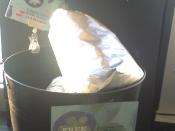Starbucks has wide range of business activity. These activities allow the company to use numerous ways of product distribution. With the company operating in many locations worldwide, environmental factors play a major role in marketing decisions. Each distribution channel is affected differently and the company's flexibility in the marketing plan allows the company to adjust their strategies to meet the needs of the environmental factors.
Environmental factors can be political, social, ecological, cultural, technological and ethical in nature. Starbucks must consider what the impact each of these factors may have for them. Not considering these factors can result in the failed attempt to market a product, which may be successful domestically, in other countries where there is a significant market potential (Perrault and McCarthy, 2004).
DemographicStarbucks originated in the United States but has expanded into many different demographics over the years. It had been a trend to try the Starbucks coffee.
Almost everyday a row of students were lined up in front of the shop during that period of time. However, after a while, the trend had calmed down. Starbucks main focus is not just students. One of its main target markets is those in the labor force. Starbucks products are priced a little higher than their competitors; therefore, its target customers are adults that can afford the prices. Another potential customer would be the tourists passing by strategically placed shops.
Population facts are important to Starbucks because they can give Starbucks valuable statistics. People ages 15-64 make up the largest percentage of the population, and therefore will have greater control of the market than any other sector. This implies that the most important target markets for Starbucks are people within this age group. The ethnic background is also an important to a company because it influences tastes, trends, perceptions,


